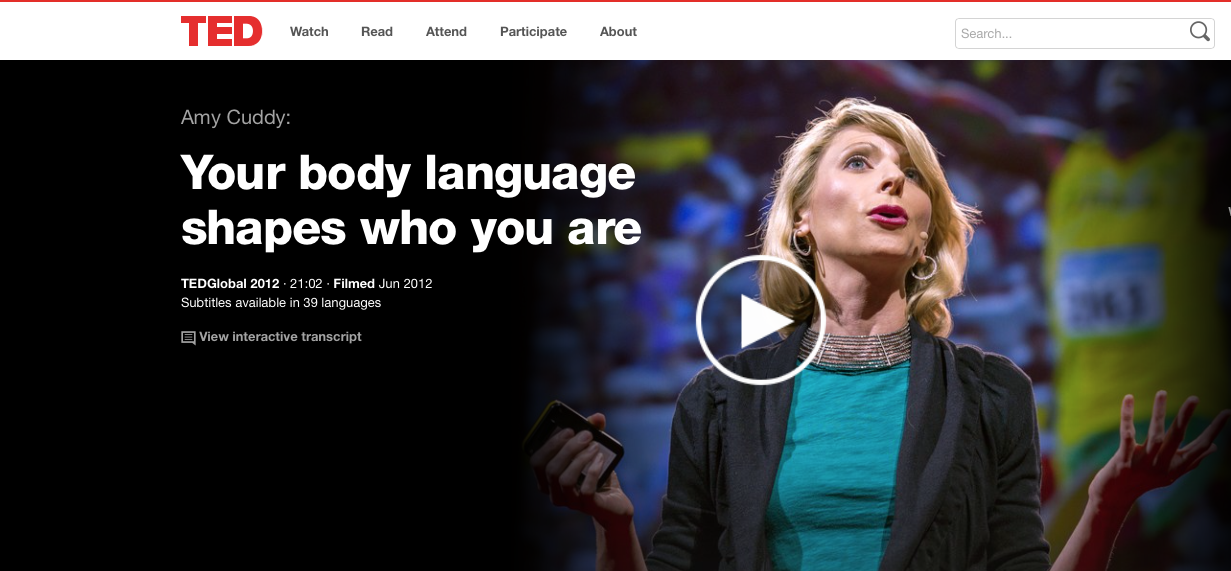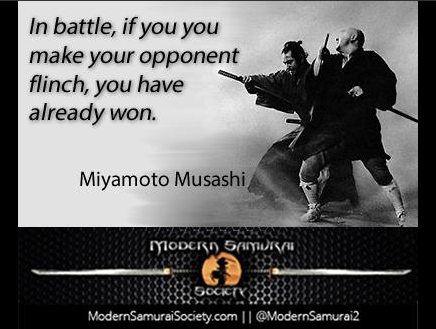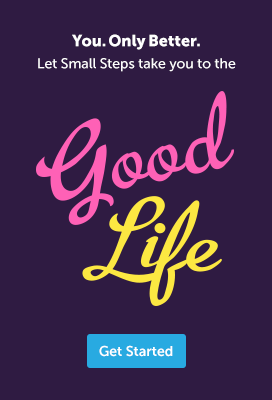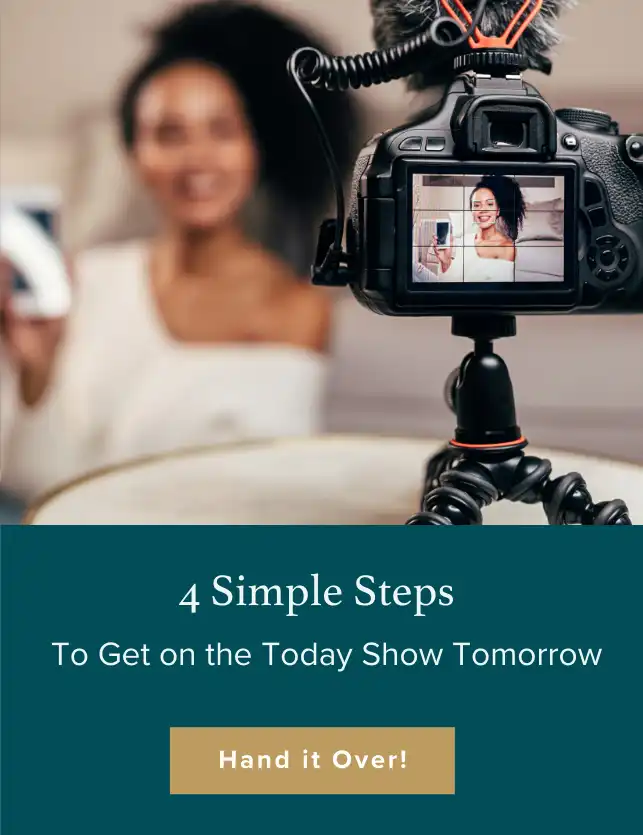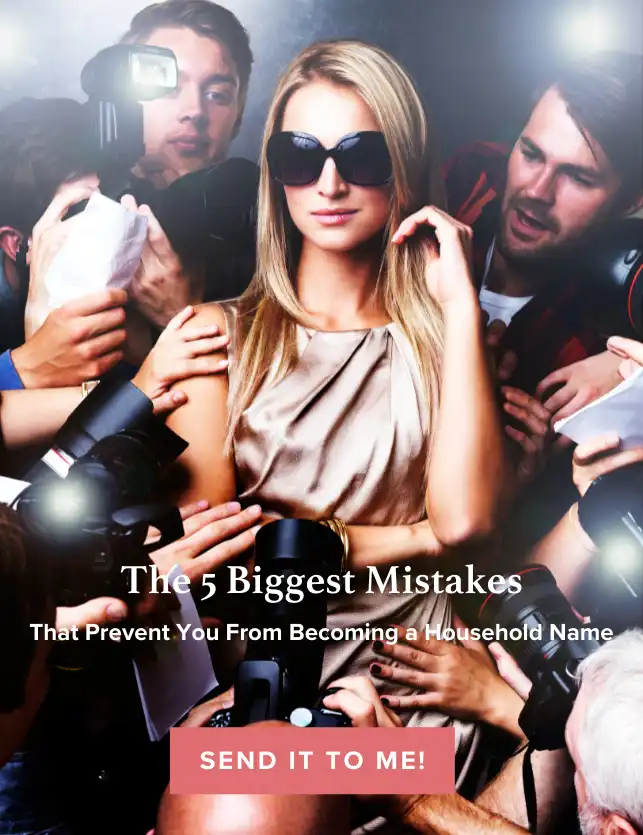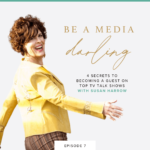Don’t Fake it Until You Make it: 7 Zen Habits
I abhor the phrase, “Fake it ‘til you make it.” The very fact that anyone would want to fake anything is intrinsically dishonest and feels bad.
Why not re-imagine the way you want to be with real practices and mental focus with these 7 Habits to Create Real Change Using Aikido & Martial Arts Principles?
-
Suspend disbelief to create a new habit.
Suspend disbelief. This takes some doing. And here’s the thing. Many people can’t imagine the huge leap from where they are to where they want to be. When I first signed up for Aikido, the ancient Japanese martial art, which means, the “Way to Harmonize with the Spirit of the Universe,” the application asked what my goal was in training in Aikido. I wrote down to be a 7th Dan (7th Degree black belt). Ha.
To give you a sense of how accomplished a 7th Dan is when you first get your black belt you are a 1st Dan. But my only reference point was my Aikido teacher Hans Goto Sensei who is a 7th Dan. So I imagined that that’s where I’d want to be, in his shoes with his expertise and his grace and equanimity. Not taking into account he had been training since his twenties and I was starting at age 53.
The goal of becoming a 7th Dan was ignorant wishful thinking based on lack of knowledge or experience. Much like the calls I get from Oprah hopefuls who want to be on her show, yet haven’t done a single local TV appearance, who don’t yet have a following, or are on the brink of bankruptcy, and see her show as their savior.
When I taught seminars about how to get on Oprah, participants would thank me afterward by saying one of two things. “Thank you for helping me understand what it takes to be on the show. I have a lot of work to do before I’m ready.” Or, “I’m ready and I now see what I need to do to package myself properly so Oprah’s producers can see that I’m right for the show.”

How to appear on Oprah Photo Credit: Mike Hayes
Ignorance is only valuable if, when you discover the gap in your awareness, you’re willing to do the work. Because, even if we suspend disbelief the chasm between wish/want and reality is too big.
Yet, can I put that aside for a moment and create a pathway toward that end? Yes. It’s called training. Coupled with imagination, and persistence, the suspension of disbelief can be a powerful tool. Also, it must be accompanied by continuous deliberate action.
In the dojo, on the mat I position myself in front of sensei as close as I can get for two reasons. I want to see and feel what he’s doing as best as I can. And I want to absorb his energy and his teachings, the direct transmission of his wisdom and skill.
The other way that direct transmission happens is when he throws me. He often says, “You have to feel the technique.” Part of the suspension of disbelief is feeling your way into your future self. I actively imagine that I’m in sensei’s body as he’s warming up, and that we are one so I can take on his technique and his characteristics.
How well is this working you might ask? I’m sad to say that as much as I can imagine it, my body has yet to comply in any measurable or obvious way. I’m inching forward. Not leaping in great bounds.
However, though this is often enormously discouraging, I continue to believe that through ongoing training, coupled with my mental perseverance, improvement will come. I may never become a 7th Dan, but I can embody and express the teachings of Aikido with the body and spirit that I have and as much as my physical, mental and emotional abilities allow in this given body.
-
Fill your body with Ki (energy) to up your vibe.
This is one of the first practices we learn in Aikido. You imagine that your energy extends in five dimensions: Top, bottom, front, back sides, and also out your fingertips. You create a force field around you to anyone who approaches you will feel it. Extending Ki is also used to connect with the person you’re training with so you are linked together energetically.
During class a while ago Hans Goto Sensei mentioned that a Japanese woman came to class one day as a visitor and was not extending ki. As soon as he mentioned it she extended ki instantly and stayed that way throughout the class. He only had to tell her once. When he asked her how she did it she said she had a strict grandmother. Whether it was fear or discipline that motivated her, we can’t know. But, unlike this woman most of us need constant reminding.
Even without a stern octogenarian disciplining you, practice filling your body with ki as you sit in front of the computer, when you have to confront a friend, discipline an employee, or speak at a PTA meeting. Eventually, it will become second nature, and you’ll start to do it automatically. In this way we stay consciously connected to each other in our daily life which will diminish the feeling of separation and make us less likely to need to fake anything.
-
Cop some faith to bolster your confidence.
Every day when I leave the house to train in Aikido my sweetie says to me, “Don’t hurt anyone and don’t get hurt, and soon you’ll have your long black skirt.” (The “skirt” is the Hakama you receive when you pass your Shodan or black belt test.)
While it’s grand to say to have faith in yourself, our faith often needs a boost. When others have faith in you it sustains your own faith, which can flag with every little discouragement or perceived defeat. Ginny Breeland Sensei, one of my first Aikido teachers, wrote to me, “I happily await the day when you become Shodan because it will occur sooner than you expect – something evident in your open-mindedness and your virtuosity concerning your approach and correctness.” I have this posted up on my bulletin board so I can read it when my faith flags, which is often.

Aikido training Photo Credit: Chetan
And it’s not just in martial arts that faith flounders. My sweetie got a staph infection in his knee and spine and had to have emergency surgery. He lost the use of his left arm, dropped thirty-five pounds and went from hugely active life of playing tennis, lifting weights, writing screenplays, and working as a story consultant and script doctor to the film industry, to a person who couldn’t carry a glass of water.
To bolster his spirits I created an image in my mind of him as a healthy, buffed, golden boy. We had watched a funny app about being a body builder and mimicked the pumping iron motion of the cartoon in the app. So whenever I want to reinforce that vision I do the body builder motion. It’s a shortcut to reminding him that I envision him as whole, healthy, healed and happy.
My dear friend Sherry Richert Belul offered to create a celebration book for him. We gathered photos and stories from his friends and family. It’s a beautiful reminder of how much he is loved—which also helps reinforce the future self when he remembers back when he couldn’t button his own shirt.
Every year at the Oscars as the winners stand on the podium to receive their statue, they mention the fact that there were people close to them who believed in them and their movie when they didn’t believe in themselves. (Often the wives!). We need others who see the future vision of ourselves and hold that in their minds for us to step into when we are ready.
-
Work toward whatever you want.
One of my favorite sayings is, “Trust in Allah, but tie your camel.” Sure, a vision board is great, but you also have to get off your as_. You dream of writing a book? Follow Julia Cameron’s advice and start a morning pages practice. You wake up, you pull out that journal, you scribble some words.

How to write a book Photo Credit: Trey Ratcliff
Most of them will be crap. You’ll throw a big bunch of them away. I recall countless writers telling stories about how hard it is to get enough good pages to make a book. Alice Seybold told Terry Gross of NPR’s Fresh air that it took her two and a half years to get the voice of Helen, her main character right. To capture Helen she rewrote The Almost Moon three times from three different points of view. She said that this is her process to find the right voice.
It took Stephan Eirik Clark ten years to write Sweetness #9.
Scott Fitzgerald re-wrote The Great Gadsby three times before the manuscript got accepted by Scribners.
New Yorker cartoonist Roz Chast submits her rejections up to five times, retooling them each time. Her philosophy? There’s a germ of a good idea in there, it just needs to get tweaked until it clicks.
Ann Lamott’s advice to writers? “Write the worst sh_t in America.”
I oblige her every week in my writing group. As I transcribe those pages from my notebook into my computer I have many moments of despair — because I can see how little of it I’m going to use.
And yet, there in the rubble, are a few good sentences, a scrap of dialog, or a description that will stick. Those are the flecks of gold (not even nuggets yet) that I’m panning for. I have a vision. I’m inching forward. For the Young Adult book I’m laboring over, I’ve created a cover. I’ve begun the design of the website. I write a bit of it in my writing group every week. I’m working toward.
-
Test the power pose and see how you feel.
In her TED talk, social psychologist, Amy Cuddy recommends putting your hands on your hips in a power pose to shift your perception about yourself and other’s perception of you as well. Cuddy suggests that the pose can, in two minutes, “affect testosterone and cortisol levels in the brain, and might even have an impact on our chances for success.” And, “Can significant affect how your life unfolds.”
She says, “When you pretend to be powerful, you are also more likely to feel powerful.” I love the concept of this and it has tremendous validity. But poses alone don’t create confidence in and of themselves. Yes, if you physically change your body stance or posture you may feel different internally. But actually internalizing that feeling in real-life situations is something else entirely. You can pose all you want in public or the privacy of your own home, and still come up lacking.
In the Leadership in action courses with Richard Strozzi Heckler your body stances are put to the test – under pressure. I took his Leadership in action 1 in Petaluma and was surprised at some of what my own body revealed. His courses are based in somatics and use principles of Aikido so it’s no surprise at how naked I felt on his mat, as in Aikido.

Leadership in action – how to be a leader Photo Credit: Kesara Rathnayake
Under pressure, in our first reactions to circumstances, we reveal our personalities. For example, in the course I took the instructor, Mark Mooney, had the program participants engage in a simple exercise so they could notice how they respond in a situation that quickly reveals the depth of your poise and equanimity. If you’re approaching someone famous or someone you respect which one of these three things do you do?
- Rush at them over-exuberantly, chattering away, and thrust your hand at them, perhaps invading their space. (over extending).
- Simp and fawn over them, in essence making yourself submissive or subservient. (under extending).
- Meet their hand in the middle, give full, present eye contact, while staying grounded and centered and stand on equal footing? (extending the proper amount).
This quickly showed me where I wasn’t extending fully when I felt cramped by the person playing the famous/respected person who came too close to me and made me feel uncomfortable.
The good news? You can modify your behavior on the spot once you’re aware of it. So the next time I repeated this exercise I didn’t allow the “famous person” to invade my space. So it’s an iterative behavioral process to see if you can keep your “pose,” and thus change your brain chemistry consistently, as Cuddy suggests. It’s under pressure we see the measure of how we respond in situations that test our mettle and reveal our fallback response.
That said, even after five years training in Aikido I still blink, shrink or jump when training stop/start with a bokken (wooden sword) as my attacker strikes my head stopping an inch away. Even though Hans Goto Sensei reminds me. “Be brave!” My instinct is to leap out of the way. Sometimes it holds. Other times it doesn’t. It’s an ongoing training.
So put your power pose to the test – over and over again so you can shift your response little by little or in one fast, permanent change. Most people need the practice. This is why we role-play realistic situations for media training to prepare for print, radio and TV interviews. I play everyone from Bill O’Reilly to Oprah— rude, hostile, belligerent, invasive, antagonistic, or overly intimate.
Because it’s hard to stand your ground under pressure when someone comes at you with aggressive words, a forceful body, an angry face, while you sweat under the hot lights or in a studio with a microphone thrust in front of you. This is especially daunting because the host holds the power in their (familiar) domain.
One of my clients was on Geraldo for a TV segment on a particularly sensitive topic. “Off camera” walking the hallways in the studio, Geraldo’s producer asked my client the same question 29 times trying to get him to give a different response. My client held his ground and didn’t waver.
The sensation of fear or uncomfortable-ness dulls with repetition. We had trained enough so my client didn’t rattle. Typically by the tenth time of me being invasive or aggressive in a role-play it’s not so scary and almost any client can hold his own.
But also, this client had been meditating since he was five, travels the world giving seminars, and worked with me diligently for over a year to prepare for media appearances. So his equanimity came from his depth of training in his work, personally and professionally as well as his direct preparation for press.
The saying, it takes ten years to become an overnight sensation, applies here. We often don’t see the enormous work it takes behind the scenes to hold up in extreme circumstances.
A simple pose is typically not enough to shift behavior and internal dialog permanently. Put your pose into action over and over again until it becomes second nature.
-
Change a tiny habit and become your best self.
My client, Dr. Kyra Bobinet, Harvard trained, Stanford teacher, and CEO of Fresh Tri, a design firm that specializes on Behavior Design for the Health & Wellness Industry, explained to me that creating healthy habits is an iterative design process. This means that once you attempt to instill a habit there is typically a point where there are warning signs that it is breaking, and the person is inconsistent in doing the desired behavior. Even though, if you ask them, it’s 100% what they say they want.
She claims those glitches lie in the unconscious brain, and her team makes the necessary refinements to reboot the positive habit. She cites that 95% of our behavior is being driven by our unconscious mind. (Leonard Mlodinow, Subliminal book). Typically what happens next is that your conscious self sets up the plan. But the unconscious self says, “Who do you think you are?” And they have an argument. In that gap is the answer to shifting behavior and making lasting change.
To make those desired changes “Conscious Self” and “Unconscious Self” need to align. Bobinet’s mentor, behavior design expert and social scientist BJ Fogg, has a system for that, called Tiny Habits.
Fogg says that there are three ways to change a behavior:
Option A. Have an epiphany
Option B. Change your environment (what surrounds you)
Option C. Take baby steps
But, he says, rule out Option A and focus on the other two. I signed up for his tiny habits program to keep moving forward with my Aikido practice.
My three tiny habits are:
- Do the Kototama every morning with John Stevens Sensei. This is a toning of sacred words and phrases that refers to the Japanese belief that mystical powers dwell in words and names and that speaking them can influence and effect our circumstances, environment, mind, body and soul.
- Post an update to our Aikido Facebook page.
- Transcribe one line from the notes I take in class to capture the brilliance of my teacher Hans Goto Sensei so I won’t forget. (Which I’ll later use as a Facebook post so it does double duty).
NOTE: This isn’t exactly in keeping with Fogg’s methods because his tiny habits are things that literally take only a few seconds to accomplish so that they are so simple that you actually do them and they become ingrained. I modified his approach to suit my goals as I’m accustomed to this type of practice to shift my habits.
One lapse, though. I keep forgetting to celebrate myself! Which is an integral part of Fogg’s ingraining process. That’s a practice I think we could all do better. It seems super easy to allow criticism to penetrate our psyche and soul, but not so easy to let in love and help, admiration and appreciation. So don’t forget this vital step.
I’ve been exploring ways to make my The Zen of Fame™ publicity course easier to implement so we moved them to a new platform that gives you rewards for completing each assignment. Can you say “motivation?” The life you’ve dreamed of having is actually very possible. To make it real doesn’t require major tasks or grand gestures. It’s about making small and simple steps to help you figure out what you really want, and then starting to make that happen.”
On a website a while back I signed up for The Power of Appreciation 7-day course with Harville Hendrix and Helen LaKelly Hunt. I did the first assignment (write a quick note about what you love about your partner) and was immediately rewarded by clicking a button on their site that said, “I did it!” (This would be Fogg’s celebration act after you completed your three habits). My greater reward, came, however from my sweetie — who I sent the appreciation missive to as instructed — who ran into my office beaming, and started kissing me all over.
Starting with tiny habits bridges that gap between faking it and making it, and turns hope for a better you into a true, embodied reality.
-
Notice magic in the midst of life’s tedium.
I heard an extended conversation on the radio with Salman Rushdie discussing the book he wrote for his younger son, Milan. He said, “There is a real world which is not like this enchanted world. In Luka and the Fire of Life, Luka’s mother, Soraya is the one with her feet on the ground who keeps mentioning that. She keeps saying that really it’s more important to do your math homework than to be great at a video game. And that in the real world, she says, there are no levels, there are only difficulties.”
“No matter how good you are at the world of magic, at the world of imagination and play, you actually do have to face the difficulties of the real world. So I think that’s true. But it’s also true, I think, that we are creatures who live by stories. Human beings always have. And it’s very close to the heart of our nature….There’s no doubt the real world exists. “
“That’s, in a way, the given of this book, is that death really exists. And this boy, Luca, realizes that his father, who only has one life, not the thousand and one lives that you can collect in a video game, and spend with great profligacy. The person who matters most to him only has one life, and that life is ebbing away. And he has to try and save it”.
“So again there, there’s a deliberate attempt in the novel to contrast the world of the game, in which life is cheap and plentiful and can be replenished, with the real world in which life is dear and valuable and there’s only one of it and it can’t be replenished. So that contrast is very much at the heart of the book between the real and the fantastic.”
There is magic in the tedium of our days. In the fact that in this moment we have just one life which is valuable and dear and can’t be replenished.
In casual conversation discussing the meaning of life around his desk in the dojo my teacher Hans Goto Sensei, said, “What if this is all there is? Isn’t it wonderful?”
Ummmn. Kinda.
During our Aikdio training, as we fumble through a difficult technique, he often says, “It’s all good.” And, “Experiment. Play.” And many of his students repeat his phrases. Perhaps they already believe them. Or, in speaking them aloud over and over again, will come to believe them over time. These words, too, become a sort of Kototama. By intoning them we speak ourselves into new beings.
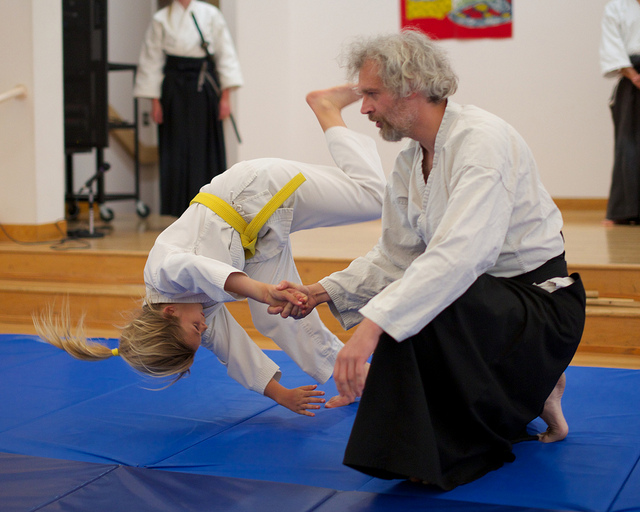
Martial arts training Photo Credit: Mark
While I know that he truly feels like it is all wonderful, I have my doubts.
Is this world really enough, if this is all there is?
I would like to feel that it is. And that’s one reason I keep training in Aikido, to be around my sensei who carries with him this trust.
When I told a friend of mine who went through a tough divorce, and then got dumped by a guy she had high hopes for what Sensei said, she cried. It gave her a smidgen of happiness.
So inside the place where you’re not happy where you are, where you wish to be more powerful, or positive or just different than you are right now. Instead of faking it ‘til you make it, consider the advice of the late musician Jeff Buckley who said, “Be awake enough to see where you are at any given time and how that is beautiful and has poetry inside even in places you hate.”
Often that’s all it is — a bit of poetry inside a moment. A smidgeon. And, day in, day out, that can be enough.
Curious about Aikido? Come on in for a free class.
If you liked this article you might also like this one.

Like what you read? Share it!
Disclosure: Some of the above may be affiliate links that I will be compensated for at no cost to you. They are products or services I’ve either used, vetted or trust. Enjoy!
WE THOUGHT YOU’D ALSO LIKE THESE POSTS

